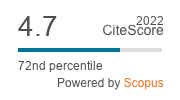Nutrition-rich cereal grains and oil seeds are the major sources of food and feed for human and livestock, respectively. Infected by fungi and contaminated with mycotoxins are serious problems worldwide for cereals and oil seeds before and after harvest. The growth and development activities of fungi consume seed nutrients and destroy seed structures, leading to dramatic declines of crop yield and quality. In addition, the toxic secondary metabolites produced by these fungi pose a well-known threat to both human and animals. The existence of fungi and mycotoxins has been a redoubtable problem worldwide for decades but tends to be a severe food safety issue in developing countries and regions, such as China and Africa. Detection of fungal infection at an early stage and of mycotoxin contaminants, even at a small amount, is of great significance to prevent harmful toxins from entering the food supply chains worldwide. This review focuses on the recent advancements in utilising infrared spectroscopy, Raman spectroscopy, and hyperspectral imaging to detect fungal infections and mycotoxin contaminants in cereals and oil seeds worldwide, with an emphasis on recent progress in China. Brief introduction of principles, and corresponding shortcomings, as well as latest advances of each technique, are also being presented herein.
REVIEW ARTICLE
Detection of mycotoxins and toxigenic fungi in cereal grains using vibrational spectroscopic techniques: a review
B. Jia Related information
1Beijing Key Laboratory of Optimized Design for modern Agricultural Equipment, College of Engineering, China Agriculture University, No. 17 Tsinghua East Road, Beijing, 100083, China P.R.
, W. Wang Related information1Beijing Key Laboratory of Optimized Design for modern Agricultural Equipment, College of Engineering, China Agriculture University, No. 17 Tsinghua East Road, Beijing, 100083, China P.R.
*Corresponding author: playerwxw@cau.
, X.Z. Ni Related information*Corresponding author: playerwxw@cau.
2Crop Genetics and Breeding Research Unit, USDA-ARS, 2747 Davis Road, Tifton, GA 31793, USA.
, X. Chu Related information3College of Mechanical and Electrical Engineering, Zhongkai University of Agriculture and Engineering, Guangzhou 510225, China P.R.
, S.C. Yoon Related information4Quality and Safety Assessment Research Unit, USDA-ARS, Athens, GA 30605, USA.
, K.C. Lawrence Related information4Quality and Safety Assessment Research Unit, USDA-ARS, Athens, GA 30605, USA.
World Mycotoxin Journal: 13
(2)- Pages: 163 - 178

Published Online: January 23, 2020
2023 Journal Impact Factor
2.0
source: Journal Impact Factor 2023™ from Clarivate™

Institutional Offers
For institutional orders, please contact [email protected].
Purchase Options
-
P. Battilani and M. Camardo Leggieri
-
F. Xu, R.C. Baker, T.B. Whitaker, H. Luo, Y. Zhao, A. Stevenson, C.J. Boesch and G. Zhang
-
A.O. Aasa, F.F. Fru, O.A. Adelusi, S.A. Oyeyinka and P.B. Njobeh
-
F. Wu
-
V. Ostry
-
V. Ostry
-
R. Bandyopadhyay, A. Ortega-Beltran, A. Akande, C. Mutegi, J. Atehnkeng, L. Kaptoge, A.L. Senghor, B.N. Adhikari and P.J. Cotty
-
A. Logrieco, A. Moretti and M. Solfrizzo
-
G. Schatzmayr and E. Streit
-
B. Grenier and I. Oswald



